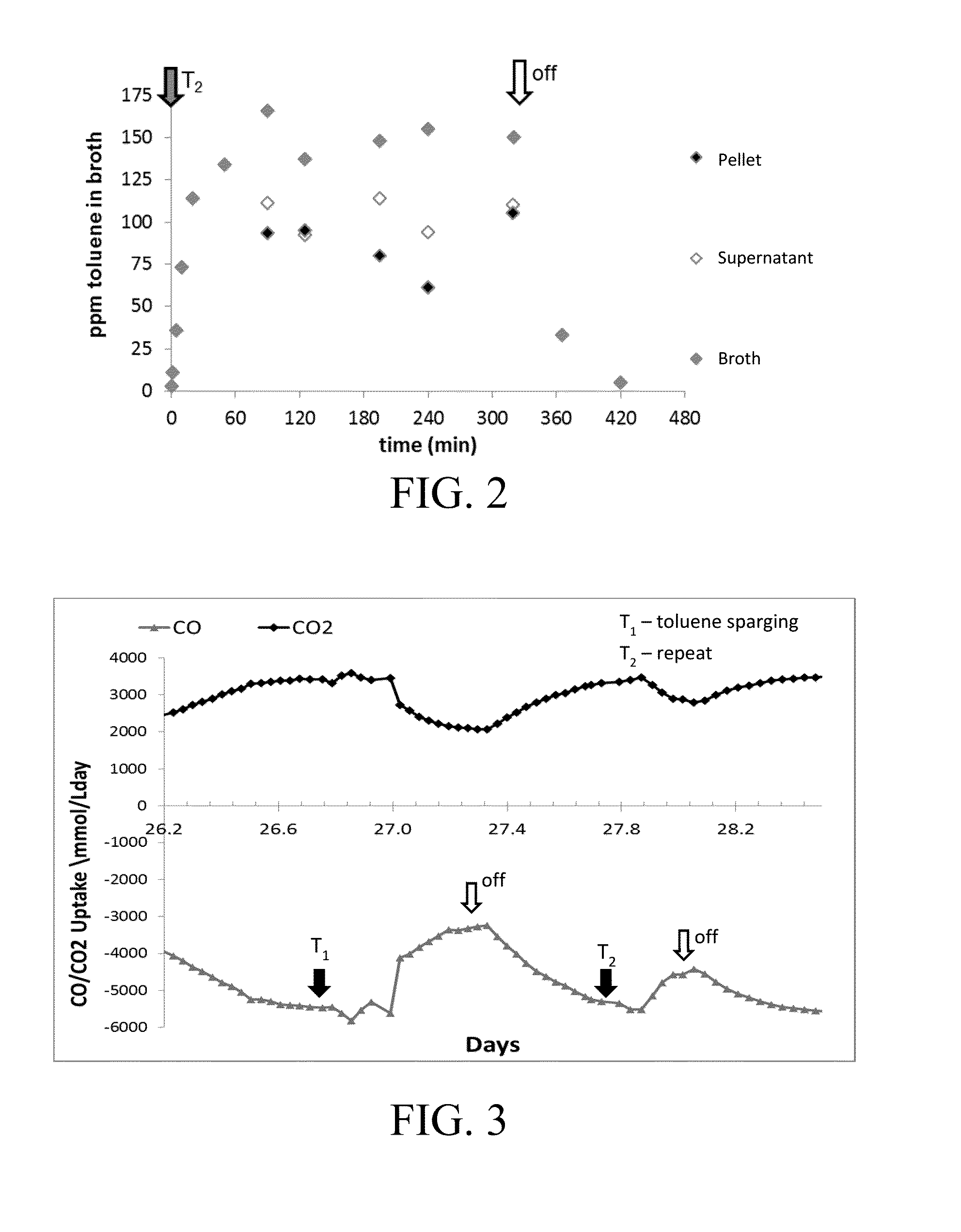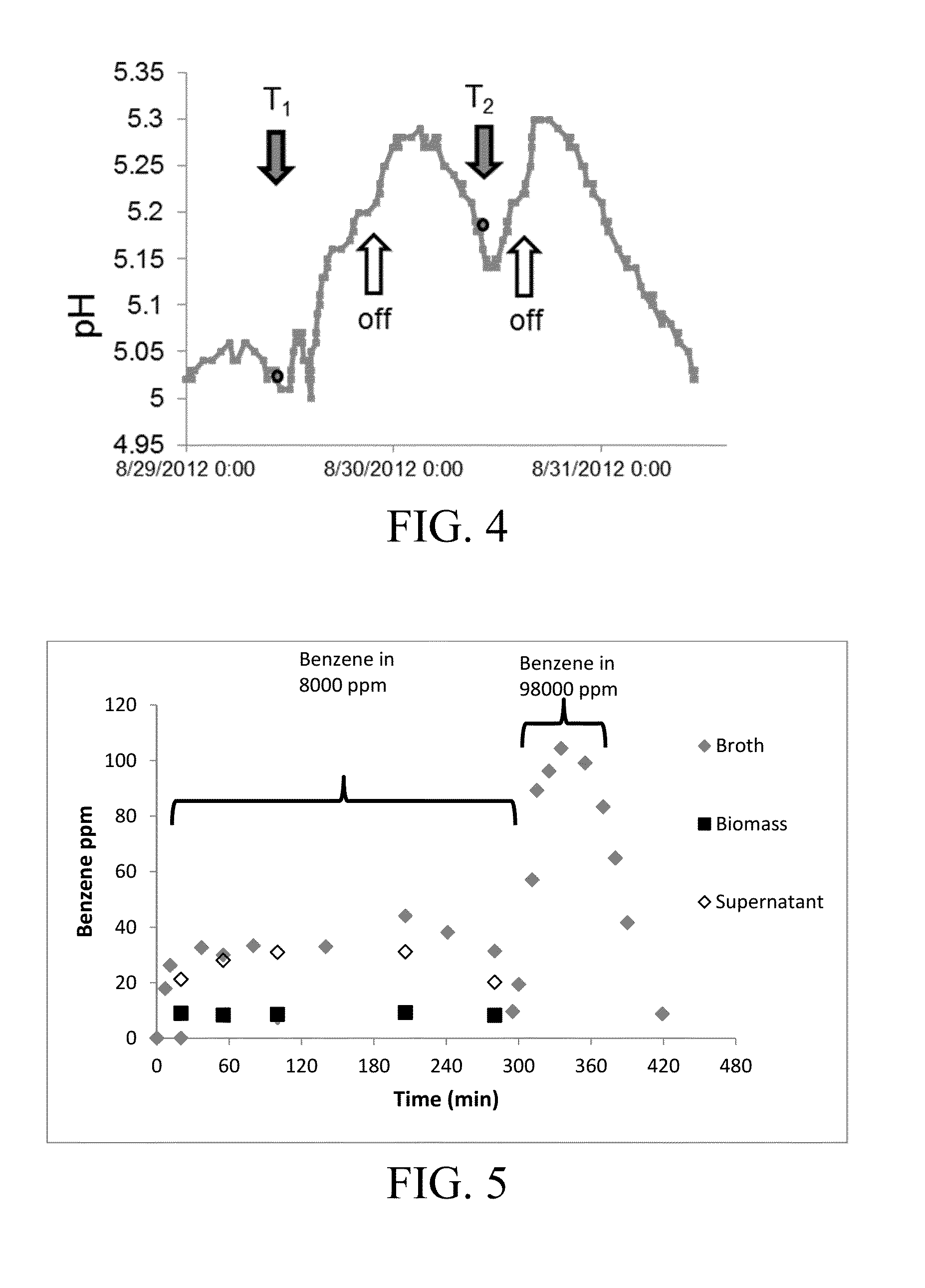Methods and systems for improving fermentation efficiency
- Summary
- Abstract
- Description
- Claims
- Application Information
AI Technical Summary
Benefits of technology
Problems solved by technology
Method used
Image
Examples
example 1
Determination of Effect of BTEX on Fermentation
[0127]Media was prepared according to the composition described in Tables 1-3 to a volume of 1.5 L and 1.5 ml of resazurin added. The solution was heated and agitated whilst degassed with N2. A Na2S drip was started at a rate of 0.5 ml / hr and temperature of the bioreactor set to 37° C. The pH was adjusted to 5.0 with NH4OH and chromium was added to adjust the ORP to −200 mV. The bioreactor was then supplied with RMG (43% CO, 20% CO2, 2.5% H2 and 33% N2) at a flow rate of 50 ml / min. The solution was inoculated with 150 ml of an actively growing Clostridium autoethanogenum culture. The fermentation was operated continuously for a period of 41 days at dilution rate 1.5. At day 26.8, Toluene was added to the gas phase. To achieve this, the inflow gas was sparged through a toluene solution, which allowed toluene to accumulate in the reactor. Toluene was allowed to accumulate for 17 hours. The fermentation was allowed to recover and the exper...
PUM
| Property | Measurement | Unit |
|---|---|---|
| Fraction | aaaaa | aaaaa |
| Fraction | aaaaa | aaaaa |
| Temperature | aaaaa | aaaaa |
Abstract
Description
Claims
Application Information
 Login to View More
Login to View More - R&D Engineer
- R&D Manager
- IP Professional
- Industry Leading Data Capabilities
- Powerful AI technology
- Patent DNA Extraction
Browse by: Latest US Patents, China's latest patents, Technical Efficacy Thesaurus, Application Domain, Technology Topic, Popular Technical Reports.
© 2024 PatSnap. All rights reserved.Legal|Privacy policy|Modern Slavery Act Transparency Statement|Sitemap|About US| Contact US: help@patsnap.com










